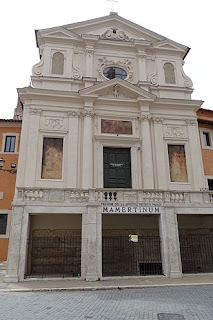Saturday, 31 October 2020
Osvaldo Romberg: Man & Monkey , 2012
Argintinian 1938-2019
Osvaldo Romberg is a conceptual artist whose body of work is devoted to the critical analysis, interpretation, and representation of art history. Dissection and categorization are at the core of his practice; in his “Color Classification” works from the 1970s, for example, Romberg would break down the constituent colors used in iconic Old Master paintings, and present them as an ordered series in the absence of their original context. He has also made a number of works on paper, each of which compiled examples of a range of brush marks made using different parts of his body. In the 1980s, he created a number works about architecture and landscapes, frequently involving scaled models or representational imagery. His work also references literature and Modernist theory.
Friday, 30 October 2020
f75 Assault on Tyre: Made in Northern France, between 1232 and 1261
f67v Ebremars, Archbishop of Caesarea
Made in Northern France, between 1232 and 1261
Thursday, 29 October 2020
Mamertine Prison: This ancient Roman prison is decorated with an upside-down cross not as blasphemy but as saintly tribute.
Christian significance: threats to the state
It is not known when the prison went out of service permanently, but the site has been used for Christian worship since medieval times, and is currently occupied by two superimposed churches: S. Giuseppe dei Falegnami (upper) and S. Pietro in Carcere (lower). The Cross on the altar in the lower chapel is upside down, since according to tradition Saint Peter was crucified that way. It has been long referenced that St. Peter was imprisoned at the Tullianum, and that the spring in the bottom of the pit came into existence miraculously to enable him to conduct baptisms, but the Catholic Encyclopedia points out that the spring had existed long before, and that there is little first hand account of St. Peter's imprisonment there other than being the only single celled prison available for VIPs deemed threats to the state. Saint Paul's imprisonment is well referenced by his Roman citizenship and decree of execution by Nero.
The origins of the prison's names are uncertain. The traditional derivation of "Tullianum" is from the name of one of the Roman kings Tullus Hostilius or Servius Tullius (the latter is found in Livy, Varro, and also Sallust); there is an alternative theory that it is from the archaic Latin tullius "a jet of water", in reference to the cistern. The name "Mamertine" is medieval in origin, and may be a reference to a nearby temple of Mars.
According to tradition, the prison was constructed around 640–616 BC, by Ancus Marcius. It was originally created as a cistern for a spring in the floor of the second lower level. Prisoners were lowered through an opening into the lower dungeon.
Subscribe to:
Comments (Atom)


















































